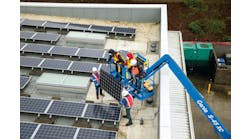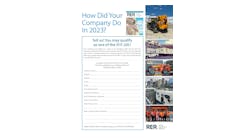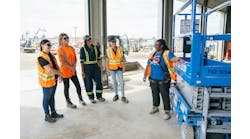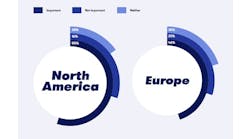Piper Jaffray, in partnership with RER, announced the Rental Sentiment Index in February was 6.1, indicating that the industry perception is that there will continue to be modest-to-moderate expansionary activity ahead.
The Rental Sentiment Survey, which gauges the outlook of the construction equipment rental industry, polls industry executives for their expectations on rental revenues, rates, volumes, utilization, capital expenditures and the general outlook for the rental industry. The Rental Sentiment Index is standardized on a scale from 1 to 10, with 1 signaling a significant downturn and 10 signaling significant expansion in the current calendar year.
The February results were marginally lower than the January and December results, which were both 6.2, and part of a downward trend since November when the reading peaked at 6.5. Still, these results signal steady rental expansion, which Piper Jaffray considers to be “the optimal growth environment for rental companies.”
“The slight downtick is actually immaterial,” George Tong, research analyst with Piper Jaffray, said. The 6.1 reading remains consistent with the past months findings, he said.
“We find that being in that 6 to 7 range is the perfect balance,” he added. It indicates that the industry is feeling the “cyclical tail winds” that lead to healthy growth.
Whereas a higher reading might seem preferable, “moderate industry growth encourages the ongoing secular penetration of rentals and mitigates against over-investment in the rental fleet,” according to this month’s report. Tong agreed with that perspective. “Hockey-stick like growth could be problematic,” he said. What happens is that strong growth encourages ownership over rental, so it will eventually have a negative impact on the rental market, Tong explained. Conversely, the steady growth “is conducive to the secular shift from owning to renting due to lack of excessive liquidity,” the report said.
In addition to moderate growth projections, Tier 4 emissions standards are also prompting more contractors to rent equipment instead of buying it. “The new protocols by EPA cost money and downtime,” Tong said. As a result, contractors would rather place the onus of becoming compliant on the rental companies rather than have to invest money into making their own fleets meet the new standards.
The rental rate environment also seems to be stabilizing, according to this month’s reading. “We are hearing fewer negative commentary on rate pressures from rental executives—of the 115 people we surveyed, only six noted rate pressures,” the report says. Rates are expected to increase three to four percent in 2014, according to those surveyed.
This steady increase in demand is being driven by "increases in privately funded projects" and "infrastructure work," as well as by “overall improvement in nonresidential construction.” Rental activity continues to be positive, even surprisingly so, despite the unusually cold winter. This has prompted many in the industry to anticipate an even stronger spring because renting usually increases in warmer weather when they are more projects.





